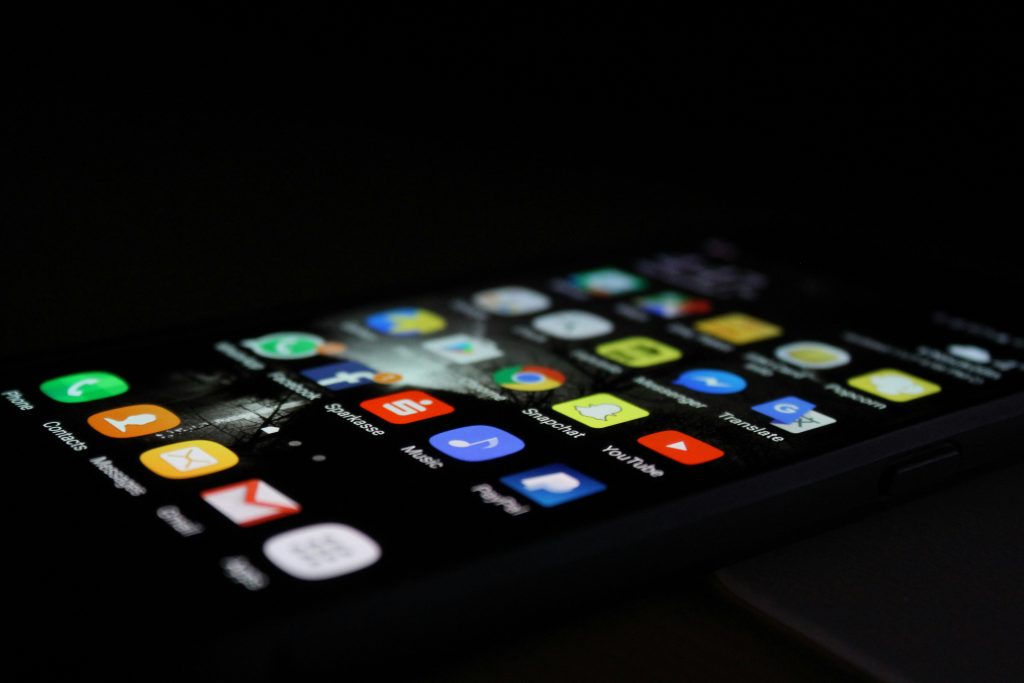
Lately, it feels like all the media reporting we encounter about the worsening state of youth mental health inevitably cites social media as a culprit (e.g., Bahr, 2024; Frist, 2024). Concerns about the impact of online platforms are understandable, considering their colossal role in the lives of young people: as many as 96% of American teens report daily social media use (Anderson et al., 2023).
Research implicates social media in a range of negative outcomes for young people, such as increased risk of self-harm, disordered eating behaviours, depression and anxiety (Sala et al., 2024). However, studies regarding the impact of social media on young people’s mental health often produce mixed results, creating uncertainty about the exact nature and extent of this relationship (Etchells, 2024). A further concern is the over-representation of community samples in this literature, leaving little understanding of the impact of social media on adolescents with clinically significant mental health symptoms.
As such, the present review by Fassi and colleagues (2024) sought to synthesise the literature on social media use and internalising symptoms (e.g. anxiety, shyness, avoidance, nervousness, fears, sadness, and worry) among adolescents, with a focus on quantifying the proportion of this literature examining clinical samples and comparing outcomes against those for community samples.

Many young people are prolific social media users – but what is the impact of this high usage on mental health?
Methods
Through searches across four academic databases and one preprint database, this study identified 14,211 peer-reviewed articles and preprints, which were screened by two reviewers. Inclusion criteria were cross-sectional or longitudinal studies quantifying social media use and internalising symptoms among adolescents aged 10 to 24 years, published in English on or after January 2007.
Three reviewers coded and extracted data, assessing study quality using a modified quality framework. Meta-analyses used random-effects models to pool data and examine associations between social media use and internalising symptoms among clinical and community samples. Moderator analyses explored the effect of pre-determined variables on heterogeneity.
Results
Systematic review
The 143 included studies (141 articles and 2 preprints) included a combined sample of 1,094,890 adolescents. These studies were mostly cross-sectional (66%) and conducted with populations from the Global North (82%).
Associations between social media use and internalising symptoms were examined through 886 total effect sizes, 11% of which utilised clinical samples. Community samples accounted for most total effect sizes (88%).
Most included studies focused on depression (67% of effect sizes) and used self-report measures (92% of effect sizes).
Just over half of included studies were deemed to be of acceptable quality (55%), with the remainder classified as being of questionable quality (45%).
Meta analysis
Social media use was positively associated with internalising symptoms in clinical and community samples. However, this was only to a small degree, and with high heterogeneity:
- Time spent on social media had a small, positive association with internalising symptoms in 7 studies with adolescent clinical samples (n = 2,893; r = 0.08, 95% CI [0.01 to 0.15]; p = .03).
- Social media engagement had a small, positive association with internalizing symptoms in 4 studies with adolescent clinical samples (n = 859; r = 0.12, 95% CI [0.09 to 0.15]; p = .002).
- Time spent on social media had a small, positive association with internalizing symptoms in 49 studies with adolescent community samples (n = 479,215; r = 0.12, 95% CI [0.09 to 0.15]; p < .001).
- Social media engagement had a small, positive association with internalizing symptoms in 62 studies with adolescent community samples (n = 65,799; r = 0.14, 95% CI [0.10 to 0.18]; p < .001).
No examined factors (sample type, age, sex, measures used, or conduct of study before or after COVID-19) contributed significantly to heterogeneity, and there was no evidence of small study bias.
Notably, the associations did not significantly differ between clinical and community samples.

Evidence from this meta-analysis supports a modest link between social media use and internalising symptoms in adolescents from clinical and community samples. However, clinical populations were under-represented.
Conclusions
This systematic review and meta-analysis found that greater social media use was modestly associated with higher scores on measures of internalising symptoms among adolescents. Studies examining clinical samples represented a relatively small proportion of the examined literature, and the high degree of variability was not explained by sample type, measures used or demographic characteristics.
Though findings did not support significant differences between clinical versus community samples, the authors concluded that: “current research falls short of adequately targeting the specific populations required to draw accurate inferences” regarding “social media’s role in increased clinical-level mental health symptoms among adolescents.”

This is a robust review of the field, which finds that we need more targeted research to better understand the effect of social media on young people with clinical-level mental health symptoms.
Strengths and limitations
The methodological decisions associated with this systematic review are thoroughly documented and well justified in the article and supplemental materials, and many elements of this review support its rigour. A comprehensive search strategy and sound rationale for selection criteria instil confidence that as much relevant literature as possible was captured. Pre-registration of the study protocol with PROSPERO, and adherence to PRISMA and MOOSE guidelines, indicate that the study was conducted and reported in line with best practice.
Limitations reported by Fassi and colleagues include:
- Possibility of response bias through over-reliance of self-report measures in the included literature;
- Reliance on cross-sectional data meaning that causal relationships cannot be inferred;
- Inability to generalise to clinical mental health conditions beyond internalising symptoms and conditions, meaning that impacts on mental health more generally cannot be determined, and factors such as comorbid mental health conditions are not accounted for; and
- Possible language bias through exclusion of studies not in English language.
For us, one of the key limitations in this review is the substantial over-representation of study populations from the Global North, which make it difficult to meaningfully interpret whether the present findings are applicable globally, especially considering around 90% of adolescents live in low- and middle-income countries (LMICs; UNICEF & WHO, 2022). In an earlier article, Ghai and colleagues (2022) discuss the current state of research into social media and adolescent wellbeing in the Global South, and conclude that knowledge gaps limit generalisability and comparisons across different global regions. They posit that geopolitical, socioeconomic and cultural context are crucial in considering the positive and negative impacts of social media on adolescents; factors which are not considered or discussed in the current systematic review, and which may have contributed to the high degree of heterogeneity reported.

This review of social media use and internalising symptoms in adolescents is rigorous, but does not account for variability across global contexts, despite most of the world’s adolescents living in LMICs.
Implications for practice
This review provides a reference for stakeholders and decision-makers to understand what is currently known (and not known) about the relationship between social media use and internalising symptoms among adolescents. It adds to the literature regarding impacts of social media on youth mental health, including disordered eating (see Francesca’s Mental Elf blog), depression and suicidality (see Marcus’ Mental Elf blog).
Findings of this study indicate a range of research gaps, and the authors call for further investigation into this association among clinical populations, and integration of social media into prevention and intervention approaches. This review has the potential to inform policy regarding regulation of social media companies and online safety standards. However, these findings need to be interpreted and applied with care and specificity to avoid diminishing the complexity of this issue.
Social media is often used as a scapegoat for worsening youth mental health, and we frequently see claims about its impact that are inaccurate or overstated. Overly simplified and harm-focused rhetoric on this topic has the potential to shape real-world outcomes, for better or worse. For instance, the South Australian government has proposed banning social media for users under the age of 14, “fuelled by concerns that social media was contributing to mental illness in young people” (Boscaini, 2024). Leading experts and youth advocates caution that blanket bans will not solve declines in youth mental health but will cut off young people from an important source of connection and support (Taylor, 2024). Online social support has been associated with better subjective wellbeing and mental health for some young people (Sala et al., 2024), particularly those who experience identity-based marginalisation or have poor access to in-person supports.
This review indicates that social media likely plays a role in the degree of internalizing symptoms experienced by some adolescents, though this association is small, variable and correlational. There is still much we do not know about the mechanisms underpinning this association, or who is most at risk and under what circumstances. The findings of this review call into question whether the attention paid to social media as a contributor to worsening youth mental health is proportional to its impact. If not, we risk shutting down sophisticated discussions about factors that may contribute more substantially or failing to invest in efforts that may be more effective. Given the prevalence of mental health concerns among the global youth population, this is an opportunity cost we cannot afford.

Social media use is one (small) piece of the puzzle, but more sophisticated conversations about what drives worsening youth mental health, for whom, and in which circumstances are needed.
Statement of interests
None to declare.
Links
Primary paper
Fassi, L., Thomas, K., Douglas, A. P., Leyland-Craggs, A., Ford, T. J., & Orben, A. (2024). Social media use and internalizing symptoms in clinical and community adolescent sample: A systematic review and meta-analysis. JAMA Pediatrics, 178(8) 814-822.
Other references
Anderson, M., Faverio, M., & Gottfried, J. (2023). Teens, social media and technology 2023. Pew Research Center. Available from: https://www.pewresearch.org/wp-content/uploads/sites/20/2023/12/PI_2023.12.11-Teens-Social-Media-Tech_FINAL.pdf
Bahr, J. (2024 February 13). The kids are not alright: Is Australia in the midst of a youth mental health crisis? SBS News. Available from: https://www.sbs.com.au/news/article/the-kids-arent-alright-is-australia-in-the-midst-of-a-youth-mental-health-crisis/3i2d41k4w
Bentlvegna, F. (2020). Social media use and disordered eating: Australian study finds a link in young teenagers. The Mental Elf.
Boscaini, J. (2024 May 13). South Australia is pushing to ban social media access for children under 14, but how would a ban actually work? ABC News. Available from: https://www.abc.net.au/news/2024-05-13/south-australia-children-social-media-ban/103838688
Etchells, P. (2024) Unlocked: The Real Science of Screentime (and how to spend it better). Little, Brown Book Group. https://uk.bookshop.org/p/books/screens-are-not-your-enemy-pete-etchells/6585778
Frist, B. (2024 May 6). Youth Mental Health Is Worsening: “Connectedness” Is The Key. Forbes. Available from: https://www.forbes.com/sites/billfrist/2024/05/06/youth-mental-health-is-worsening-connectedness-is-the-key/
Ghai, S., Magis-Weinberg, L., Stoilova, M., Livingstone, S., & Orben, A. (2022). Social media and adolescent well-being in the Global South. Current Opinion in Psychology, 46, 101318.
Sala, A., Porcaro, L., & Gómez, E. (2024). Social Media Use and adolescents’ mental health and well-being: An umbrella review. Computers in Human Behaviour Reports, 14, 100404.
Tan, M. (2020). Social media use and depression in adolescence: what we (don’t) know so far. The Mental Elf.
Taylor, J. (2024 July 7). ‘Blunt-force approach’: LGBTQ+ advocates say proposed teen social media ban overlooks benefits. The Guardian Australia. Available from: https://www.theguardian.com/media/article/2024/jul/07/australia-teen-social-media-ban-age
UNICEF & WHO. (2022). Global Case for Support – UNICEF and WHO joint programme on mental health and psychosocial well-being and development of children and adolescents. United Nations Children’s Fund and World Health Organization. Available from: https://iris.who.int/bitstream/handle/10665/364726/9789240061767-eng.pdf?sequence=1


